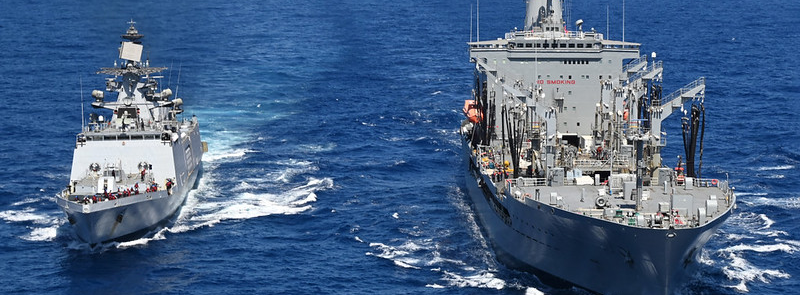
When It Occurs
Every December 4th
Timeline
Days Passed (679)
# Hashtags
#NavyDay #MaritimeSecurity
India observes Navy Day on December 4th annually, acknowledging the significant achievements and contributions of the Indian Navy to the nation. The date holds historical importance as, on December 4, 1971, during Operation Trident, the Indian Navy successfully sank four Pakistani vessels, including PNS Khaibar, resulting in the loss of numerous Pakistani Navy personnel. This day also serves as a remembrance for those who lost their lives in the Indo-Pakistan War of 1971.
Historical Significance of Navy Day
- Operation Trident (1971):
- Navy Day marks the anniversary of Operation Trident, a daring attack on the Pakistani naval base in Karachi on December 4, 1971, during the Indo-Pakistani War.
- The Indian Navy launched a surprise assault using Osa-class missile boats, sinking three Pakistani vessels, including the destroyer PNS Khaibar.
- The Indian Navy also inflicted heavy damage on Pakistani oil storage facilities, significantly crippling Pakistan's naval operations.
- This successful operation, which resulted in no Indian losses, is regarded as a key moment in India's naval history and a testament to the strategic capabilities of the Navy.
Significance of the Indian Navy
The Indian Navy is the maritime branch of the Indian Armed Forces, playing a crucial role in the country's defense and ensuring maritime security. Its primary objectives include:
-
Safeguarding Maritime Borders: The Indian Navy ensures the protection of India's coastline, territorial waters, and exclusive economic zone (EEZ) from external threats.
-
Power Projection: The Navy's presence in strategic areas like the Indian Ocean Region (IOR) helps project India's power and influence, safeguarding trade routes and ensuring regional stability.
-
Humanitarian Assistance and Disaster Relief (HADR): The Navy plays an important role in providing humanitarian assistance and disaster relief in the wake of natural calamities, both domestically and abroad.
-
Diplomatic Missions: Through joint exercises, port visits, and goodwill missions, the Indian Navy strengthens diplomatic ties with other nations, enhancing India's global standing.
-
Modernization: Over the years, the Indian Navy has undergone significant modernization with the induction of aircraft carriers like INS Vikrant, nuclear-powered submarines, advanced destroyers, and stealth frigates, solidifying its position as a blue-water navy.
Navy Day Celebrations
Navy Day is marked by various events and activities to showcase the strength, professionalism, and role of the Indian Navy:
-
Open Sea Operations and Demonstrations: The Navy conducts live demonstrations of its capabilities, including rescue operations, combat skills, and amphibious landings, in coastal areas and naval bases.
-
Parades and Ceremonial Functions: Naval parades and ceremonial functions are organized at major naval bases, such as Mumbai, Visakhapatnam, and Kochi, to honor naval personnel and celebrate their contributions.
-
Wreath-Laying Ceremonies: Senior naval officers lay wreaths at memorials to pay homage to naval heroes who have sacrificed their lives in service to the nation.
-
Award Ceremonies: Distinguished naval personnel are honored with medals, awards, and recognition for their bravery, leadership, and outstanding service.
-
Public Engagement: The Indian Navy engages with civilians by hosting public exhibitions, lectures, and meet-and-greet sessions. These activities are designed to foster greater understanding of the Navy’s role and inspire young people to consider careers in the Navy.
-
Naval Displays: In major cities and naval bases, there are often static displays of naval ships, submarines, aircraft, and other equipment. This provides the public with a glimpse of the advanced technology and hardware used by the Navy.
Operation Trident and its Legacy
Operation Trident remains a shining example of India’s naval prowess. It was not only a military victory but also a demonstration of strategic planning and precise execution. The operation inflicted heavy losses on the Pakistani Navy and altered the course of the 1971 war.
- INS Nipat, INS Nirghat, and INS Veer, three Osa-class missile boats, were instrumental in launching the missile strikes on Pakistani targets.
- The success of the operation showcased the importance of naval warfare and positioned the Indian Navy as a formidable force in the Indian Ocean Region.
Following the success of Operation Trident, Operation Python was carried out on December 8, 1971, further weakening Pakistan's naval strength.
Evolution of the Indian Navy
The Indian Navy traces its roots to the Royal Indian Navy (RIN), established during the British colonial era. After independence in 1947, the RIN became the Indian Navy, and it has since grown into a modern, blue-water navy with capabilities to operate across the high seas. The Indian Navy is now the fourth-largest navy in the world.
- Aircraft Carriers: The Indian Navy operates aircraft carriers like INS Vikramaditya and INS Vikrant, providing air superiority and force projection capabilities.
- Submarines: The Navy has both conventional and nuclear-powered submarines, including the INS Arihant, India’s first nuclear ballistic missile submarine.
- Destroyers and Frigates: Advanced destroyers like the INS Kolkata and stealth frigates like the INS Shivalik enhance the Navy's surface warfare capabilities.
- Naval Aviation: The Indian Navy operates a fleet of maritime patrol aircraft, helicopters, and fighter jets like the MiG-29K to ensure aerial dominance.
Recent Developments
The Indian Navy continues to modernize its fleet and enhance its operational capabilities to meet the evolving security challenges in the Indian Ocean Region:
-
Indigenous Development: India has made significant progress in the indigenous development of naval assets, including the Atmanirbhar Bharat initiative, which promotes self-reliance in defense production. The INS Vikrant is a key example of this effort, being India's first indigenously-built aircraft carrier.
-
Strategic Partnerships: The Navy has been enhancing its ties with other major naval powers, such as the United States, Japan, and France, through joint exercises like Malabar, Varuna, and SIMBEX.
-
Regional Security Role: As India aspires to become a net security provider in the Indian Ocean Region, the Navy's focus is on protecting India's interests and countering regional threats such as piracy, terrorism, and illegal maritime activities.
Conclusion
Navy Day is not just a celebration of the Indian Navy’s achievements but also a day to reflect on the importance of maritime security in maintaining national sovereignty and peace in the region. The observance of Navy Day on December 4th honors the brave naval personnel who risk their lives to safeguard the nation and its maritime interests. It also serves as a reminder of India's growing naval strength and the vital role the Navy plays in ensuring the country's safety and security on the seas.


